The AMD Ryzen 9 5900X remains a formidable processor for high-end gaming and demanding productivity tasks. With its 12 cores and 24 threads built on the mature “Zen 3” architecture, it continues to power countless high-performance PCs. However, to extract every bit of performance from this CPU, it must be paired with the correct Random Access Memory (RAM).
Choosing the right RAM involves more than just picking the kit with the highest frequency. The Ryzen 5000 series processors have a unique relationship with memory speed, governed by their Infinity Fabric clock. This guide provides a detailed, objective analysis of how to select the ideal RAM for your Ryzen 9 5900X, ensuring stable, optimized performance for years to come.
Understanding RAM’s Role with the Ryzen 9 5900X
Before diving into specific products, it’s crucial to understand the core concepts that dictate RAM performance with the 5900X. This knowledge will empower you to make an informed decision beyond marketing claims.
The “Sweet Spot”: Why DDR4-3600 Reigns Supreme
For the Ryzen 9 5900X and the entire Zen 3 family, the performance “sweet spot” is widely recognized as DDR4-3600. This specific frequency allows the processor’s internal clocks to run in perfect synchronization, minimizing latency and maximizing data throughput.
A Quick Technical Primer: FCLK, MCLK, and Performance
Three key clocks determine memory performance on a Ryzen system:
- Memory Clock (MCLK): The actual speed of your RAM modules. For DDR4-3600, the MCLK is 1800MHz.
- Infinity Fabric Clock (FCLK): The clock speed of the data path that connects the CPU cores and other parts of the chip.
- Unified Memory Controller Clock (UCLK): The speed of the memory controller itself.
The goal is to maintain a 1:1:1 ratio between these three clocks (e.g., 1800MHz MCLK, 1800MHz FCLK, 1800MHz UCLK). DDR4-3600 RAM achieves this ratio perfectly out of the box with a simple BIOS setting. While faster RAM like DDR4-4000 exists, it often forces the FCLK to run at half speed (a 2:1 ratio), introducing significant latency that negates the higher frequency and can actually reduce real-world performance.
Key Takeaway: Sticking to DDR4-3600 RAM with the lowest possible CAS Latency (CL) your budget allows is the most reliable path to optimal performance with a Ryzen 9 5900X.
How Much RAM Capacity is Necessary?
For the vast majority of users, including dedicated gamers and content creators, 32GB (2x16GB) is the new standard, providing ample headroom for multitasking. However, 16GB (2x8GB) remains a perfectly viable option for builds focused primarily on gaming with less intensive background tasks.
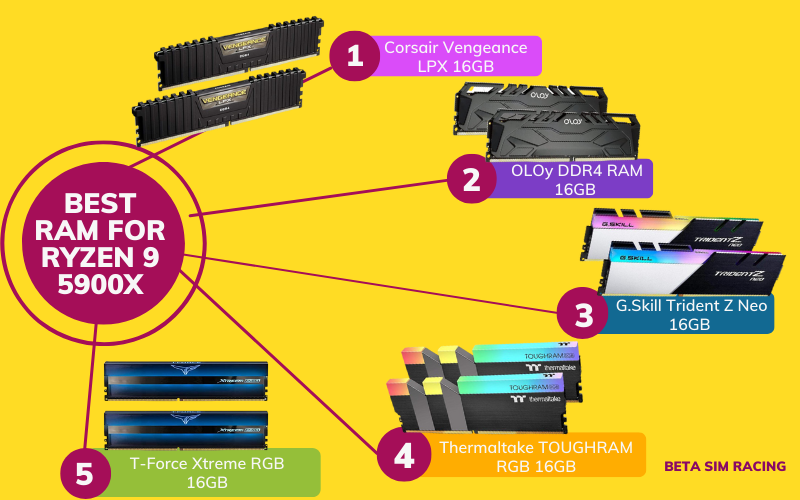
Comparative Analysis of DDR4 RAM Kits for the Ryzen 9 5900X
This table provides a high-level overview of the five RAM kits analyzed in this guide. All data reflects current product specifications.
| Product | Capacity | Type | Frequency | CAS Latency | Voltage | Key Feature | Best For |
| Corsair Vengeance LPX | 16GB (2x8GB) | DDR4 | 3600MHz | CL18 | 1.35V | Low-Profile Heatsink | Compatibility & Air Cooler Clearance |
| OLOy DDR4 RAM | 16GB (2x8GB) | DDR4 | 3200MHz | CL16 | 1.35V | Budget-Friendly | Entry-Level Performance |
| G.Skill Trident Z Neo | 16GB (2x8GB) | DDR4 | 3600MHz | CL16 | 1.35V | Optimized for AMD Ryzen | Low-Latency Gaming |
| Thermaltake TOUGHRAM RGB | 16GB (2x8GB) | DDR4 | 4400MHz | CL19 | 1.50V | Extreme Frequency (for specific platforms) | Advanced Manual Tuning |
| T-Force Xtreem ARGB | 16GB (2x8GB) | DDR4 | 3600MHz | CL14 | 1.45V | Ultra-Low Latency, Premium Aesthetics | Enthusiast Performance & Style |
Detailed Evaluation of Recommended DDR4 RAM Modules
Here we delve into an objective analysis of each RAM kit, focusing on its technical specifications and ideal use case with a Ryzen 9 5900X CPU.
1. Corsair Vengeance LPX 16GB DDR4-3600MHz C18
The Corsair Vengeance LPX line is a mainstay in the PC building community, known for its reliability and no-frills performance. Its key advantage is the low-profile heat spreader, which ensures compatibility with large CPU air coolers that might otherwise obstruct taller RAM modules.
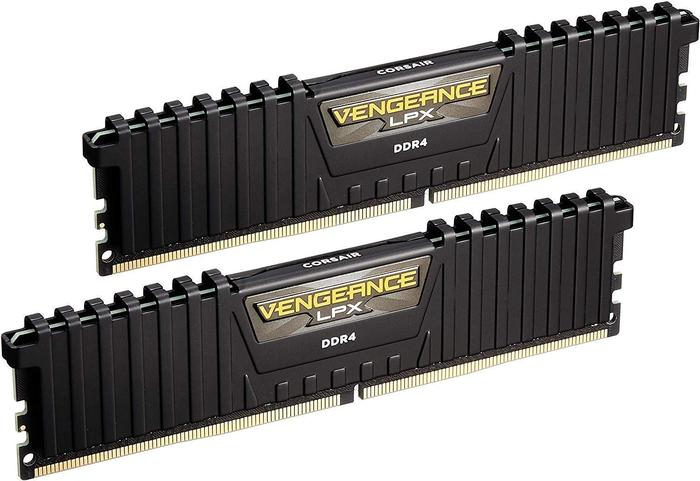
- Model: CMK16GX4M2D3600C18
- Capacity: 16GB (2 x 8GB)
- Frequency: 3600MHz
- Timings: 18-22-22-42
- Voltage: 1.35V
- Height: 34mm
This kit hits the Ryzen “sweet spot” frequency of 3600MHz. While its CL18 timings are standard rather than high-performance, it offers a stable, set-and-forget experience. It’s an excellent, pragmatic choice for builds where performance and compatibility are prioritized over aesthetics.
Pros:
- Excellent compatibility with a wide range of motherboards.
- Low-profile design is ideal for builds with large air coolers.
- Hits the optimal 3600MHz frequency for Ryzen 5000.
Cons:
- CAS Latency of 18 is not as tight as enthusiast-grade kits.
- Lacks RGB lighting, which may be a drawback for some aesthetics.
2. OLOy DDR4 RAM 16GB (2x8GB) 3200MHz C16
OLOy has established itself as a significant player in the value segment. This kit offers a lower entry point for users on a tighter budget. While its 3200MHz frequency is below the ideal 3600MHz sweet spot, its tighter CL16 timings help to offset the slightly lower speed.
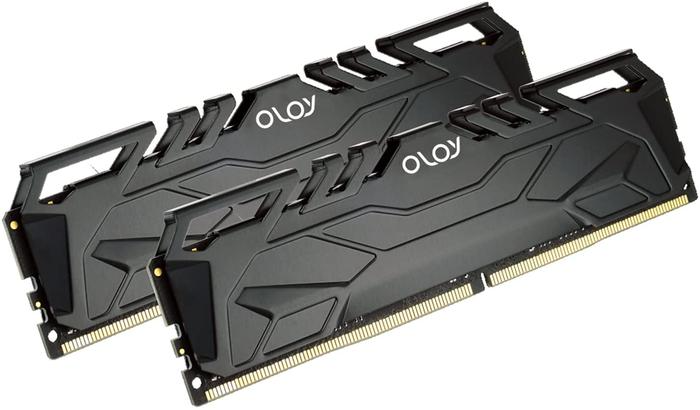
- Model: MD4U083216BJDA
- Capacity: 16GB (2 x 8GB)
- Frequency: 3200MHz
- Timings: 16-20-20-38
- Voltage: 1.35V
- Height: ~39mm
For a Ryzen 9 5900X, this RAM will deliver solid performance, and the difference between it and a 3600MHz kit in many gaming scenarios will be minimal. It’s a testament to how accessible good performance has become. Before finalizing a build, it’s wise to explore if a 3600MHz kit is available for a similar cost, but this remains a strong budget contender. For those deciding on a motherboard, comparing options like the B550 vs X570 can also impact the overall budget and feature set.
Pros:
- Highly cost-effective.
- Respectable CL16 timings for its price point.
- Performs well for general gaming and productivity.
Cons:
- 3200MHz frequency is slightly below the optimal point for Zen 3.
- Brand may be less established than competitors.
3. G.Skill Trident Z Neo 16GB DDR4-3600MHz C16
The Trident Z Neo series was specifically engineered and optimized for AMD Ryzen platforms. This kit represents a significant step up in performance by combining the ideal 3600MHz frequency with a low CAS Latency of 16.
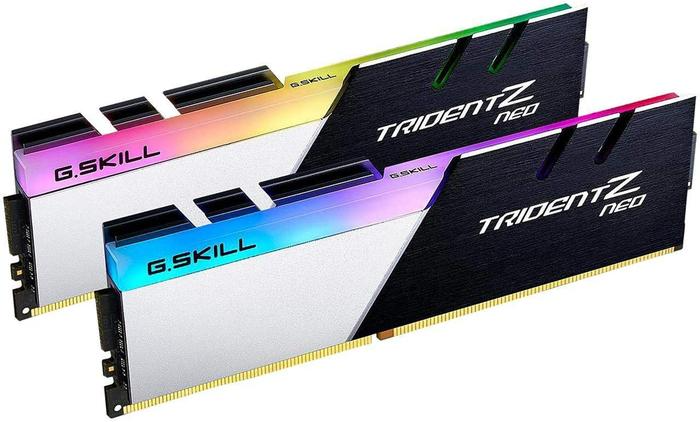
- Model: F4-3600C16D-16GTZNC
- Capacity: 16GB (2 x 8GB)
- Frequency: 3600MHz
- Timings: 16-19-19-39
- Voltage: 1.35V
- Height: 44mm
This combination of speed and low latency is what makes kits like this highly sought after for Ryzen 5000 series builds. It provides a noticeable improvement in system responsiveness and can yield higher frame rates in CPU-bound gaming scenarios. The striking dual-tone design and vibrant RGB lighting make it a favorite for showcase builds. This is an excellent all-around choice for a high-performance system.
Pros:
- Optimal 3600MHz speed paired with low CL16 latency.
- Designed and tested specifically for AMD Ryzen CPUs.
- High-quality construction and vibrant RGB illumination.
Cons:
- Taller heat spreaders may conflict with some large CPU coolers.
- Carries a premium price over standard kits.
4. Thermaltake TOUGHRAM RGB 16GB DDR4-4400MHz C19
This Thermaltake kit represents the extreme end of the DDR4 frequency spectrum. It is critical to understand that this RAM is not intended to be run at its 4400MHz XMP profile on a Ryzen 9 5900X for optimal performance.
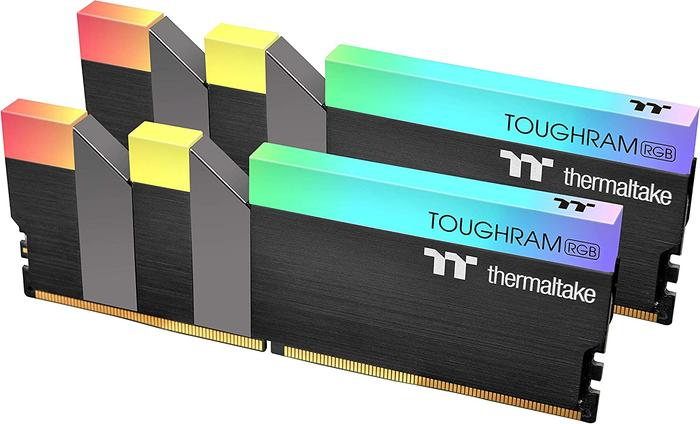
- Model: R009D408GX2-4400C19A
- Capacity: 16GB (2 x 8GB)
- Frequency: 4400MHz
- Timings: 19-25-25-45
- Voltage: 1.45V
- Height: 48mm
Running at 4400MHz would force the Infinity Fabric clock (FCLK) into an asynchronous mode, causing a significant latency penalty that would hurt performance. The value of such a kit for a 5900X user lies in its high-quality memory ICs (Integrated Circuits), which are capable of being manually tuned. An enthusiast could potentially run this kit at a more stable 3600MHz or 3800MHz with much tighter timings than standard kits, but this requires advanced knowledge of BIOS settings and stability testing.
Expert Advice: This kit is only suitable for advanced users who enjoy manual overclocking and tuning. For the average user, enabling the default XMP profile will likely result in worse performance than a standard DDR4-3600 kit.
Pros:
- Utilizes high-binned memory chips with high overclocking potential.
- Unique aesthetic and robust build quality.
- Offers a platform for advanced hardware enthusiasts to tinker.
Cons:
- XMP profile is not optimal for Ryzen 9 5900X performance.
- Requires advanced manual tuning to achieve ideal results.
- High voltage and price point.
5. TeamGroup T-Force Xtreem ARGB 16GB DDR4-3600MHz C14
For those seeking the absolute best performance without delving into complex manual overclocking, this T-Force kit is an exceptional choice. It pairs the 3600MHz sweet spot frequency with an ultra-low CAS Latency of 14, which is typically achieved using high-quality Samsung B-die ICs.
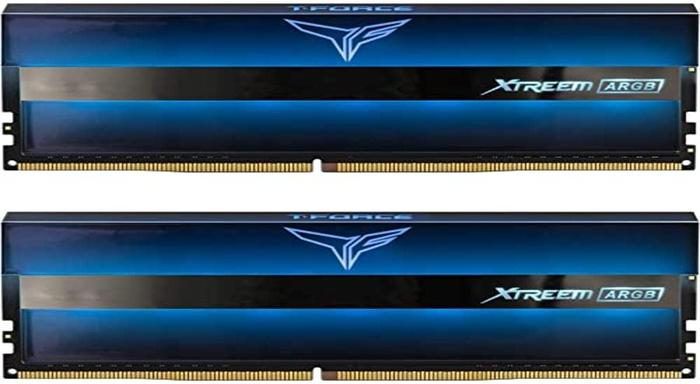
- Model: TF10D416G3600HC14CDC01
- Capacity: 16GB (2 x 8GB)
- Frequency: 3600MHz
- Timings: 14-15-15-35
- Voltage: 1.45V
- Height: 48.7mm
This combination of specs represents the peak of what DDR4 can offer for the Zen 3 architecture in a simple, XMP-enabled package. The lower latency reduces the time it takes for the CPU to access data from the RAM, resulting in smoother performance and higher minimum framerates in games. The unique full-mirror reflection and brilliant ARGB lighting also make it one of the most visually striking kits available. This is a premium product for users building a top-tier system around the Ryzen 9 5900X.
Pros:
- Best-in-class performance with 3600MHz speed and ultra-low CL14 latency.
- Often uses high-quality Samsung B-die ICs.
- Stunning and unique aesthetic with full-surface ARGB.
Cons:
- Premium price point, one of the most expensive 16GB kits.
- Higher 1.45V operating voltage.
- Tall heat spreader requires careful component selection.
Factors to Consider When Selecting RAM for a Ryzen 9 5900X
Keep these final points in mind before making your selection.
Frequency (Speed) vs. Latency (Timings)
While 3600MHz is the target frequency, latency (measured in CL) is equally important. A 3600MHz CL16 kit will outperform a 3600MHz CL18 kit because it can complete its operations in fewer clock cycles. Always aim for the lowest CL number within your budget at the 3600MHz frequency.
Verifying Motherboard Compatibility (QVL)
Before purchasing any RAM, it is essential to check your motherboard’s Qualified Vendor List (QVL). This list, found on the manufacturer’s support website, details all the specific RAM kits that have been tested and verified to work. Checking the QVL for one of the best motherboards for the Ryzen 9 5900X can prevent compatibility headaches.
Heatsink Height and Case Clearance
RAM with tall, aggressive heatsinks can interfere with large CPU air coolers. Always check the height of the RAM module and the clearance specifications of your chosen CPU cooler to ensure they will fit together. Checking the dimensions of your PC case is also a wise step.
RGB Lighting and System Aesthetics
While it has no impact on performance, the visual appeal of your components is important for many builders. Most RGB RAM kits are controllable via motherboard software (like ASUS Aura Sync, MSI Mystic Light, etc.), allowing you to synchronize the lighting across your entire system for a cohesive look.
Frequently Asked Questions (FAQ)
What is the best RAM speed for Ryzen 9 5900X?
The optimal RAM speed is DDR4-3600. This allows the CPU’s Infinity Fabric Clock (FCLK) to run at a synchronized 1:1 ratio with the memory clock, minimizing latency and maximizing performance.
Can I use 4000MHz RAM with a Ryzen 9 5900X?
While you can, it is generally not recommended for most users. Running 4000MHz RAM typically requires decoupling the FCLK, which introduces latency and can lead to lower overall performance than a 3600MHz kit. It is only suitable for advanced users who intend to manually tune their system.
Is 16GB of RAM enough for a Ryzen 9 5900X?
For most gaming and general use cases, 16GB is sufficient. However, for heavy multitasking, streaming while gaming, or professional video editing, 32GB is recommended to provide more headroom and prevent system slowdowns.
Does the Ryzen 9 5900X support DDR5 RAM?
No. The Ryzen 9 5900X is an AM4 socket processor and is exclusively compatible with DDR4 RAM. You would need a newer generation AMD (AM5) or Intel processor and motherboard to use DDR5 RAM.
What is XMP or DOCP?
XMP (Extreme Memory Profile) and DOCP (Direct Overclock Profile) are the same technology, with DOCP being ASUS’s branding for AMD platforms. It is a one-click setting in the motherboard’s BIOS that automatically configures the RAM to its advertised speed and timings. Without enabling XMP/DOCP, your RAM will run at a slower, standard speed (e.g., 2133MHz).
How do I enable XMP/DOCP in BIOS?
To enable XMP/DOCP, you must first enter your motherboard’s BIOS by pressing a key (often Del, F2, or F12) during startup. Once inside, look for the memory settings, which are often on the main or “Tweaker” page. Select the XMP or DOCP profile, save your settings, and exit.

Holding a Ph.D. in Computer Science, Dr. Alistair Finch is our chief PC Component Benchmark Analyst. He provides meticulous, data-driven analysis of CPUs and GPUs, moving beyond marketing claims to reveal their true performance. His guides help readers understand the intricate relationship between hardware architecture and real-world gaming frame rates.
